17.2.1
Natural Selection & Evolution
Survival
Survival
Individuals must survive and reproduce to pass on their genes to their offspring. Whether an individual is capable of surviving or not is influenced by the following factors:
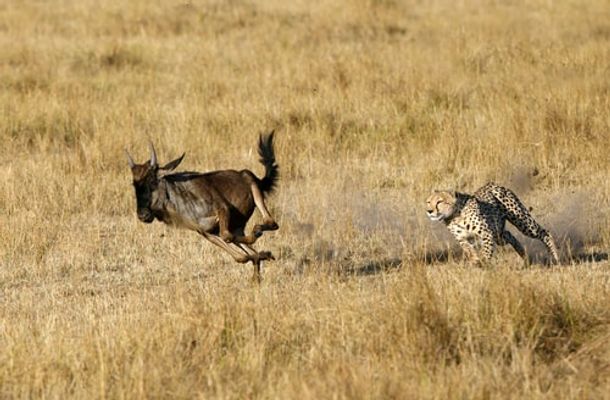

Predation
Predation
- Predation can decrease the probability of survival.
- If an individual is exposed to high predation, they are more likely to be eaten by a predator.
- If an individual is better at avoiding predators, they are more likely to survive and reproduce.
- The genes that allow an individual to avoid predation are more likely to be passed onto offspring.


Disease
Disease
- Disease can decrease the probability of survival.
- If an individual is better at combatting disease or avoiding infection, they are more likely to survive and reproduce.
- The genes that allow an individual to avoid disease are more likely to be passed onto offspring.
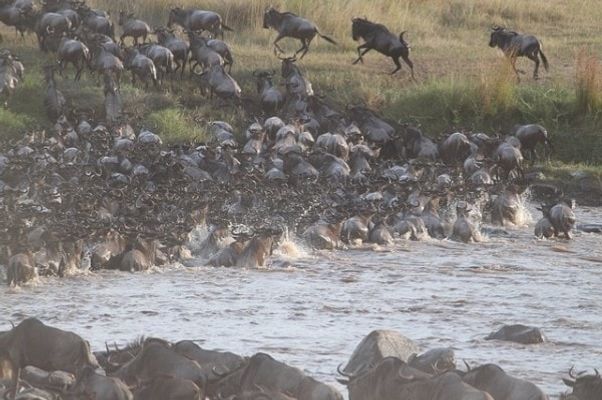

Competition
Competition
- Competition can decrease the probability of survival.
- Competition can exist between species (interspecific) or within species (intraspecific).
- If an individual is better at outcompeting other individuals, they are more likely to survive and reproduce.
- The genes that allow an individual to outcompete are more likely to be passed onto offspring.
Natural Selection and Evolution
Natural Selection and Evolution
Natural selection is the process where the frequency of alleles in a population changes over time. Natural selection is a process that gives rise to evolution.


Selective advantage
Selective advantage
- Genetic variation exists between individuals in a population.
- Some individuals will be more likely to survive (e.g. by being better at fighting disease) than others.
- Individuals that are better at surviving than others have a selective advantage.
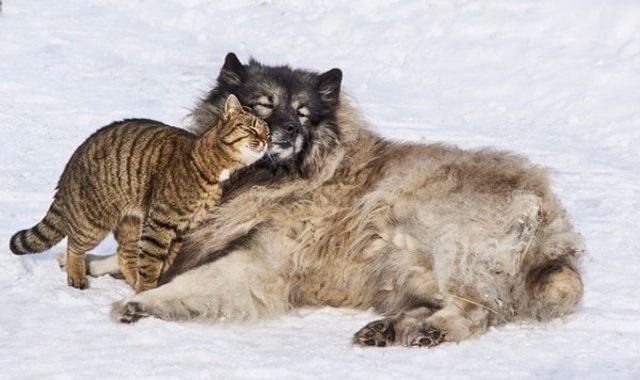

Producing offspring
Producing offspring
- Individuals with a selective advantage are more likely to survive to reproduce than others.
- This means that the genes of an individual with a selective advantage are more likely to be passed onto offspring than the genes of an individual without a selective advantage.
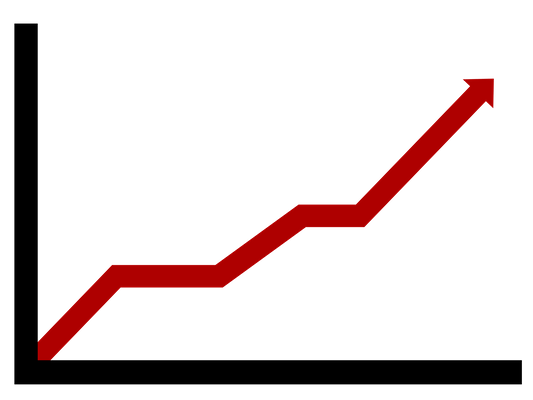

Increasing allele frequencies
Increasing allele frequencies
- Individuals with a selective advantage are more likely to pass on their beneficial alleles than other individuals.
- The next generation is more likely to have alleles that provide a selective advantage than alleles that do not.
- This generation is also more likely to survive to reproduce and pass on their genes.
- This causes the alleles that provide a selective advantage to increase in frequency in the population.
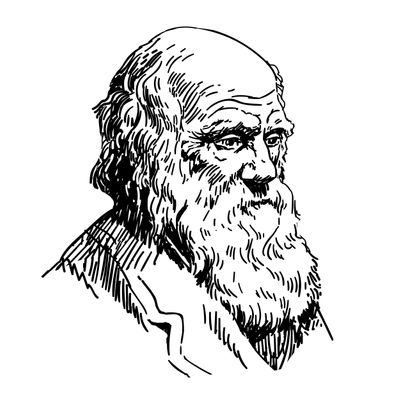

Natural selection
Natural selection
- The process where the frequency of beneficial alleles increases over time is called natural selection.
- Natural selection controls the frequency of alleles in a population.
- If a harmful allele develops in an individual, this individual is less likely to survive and the harmful allele will decrease in frequency. This is also natural selection.
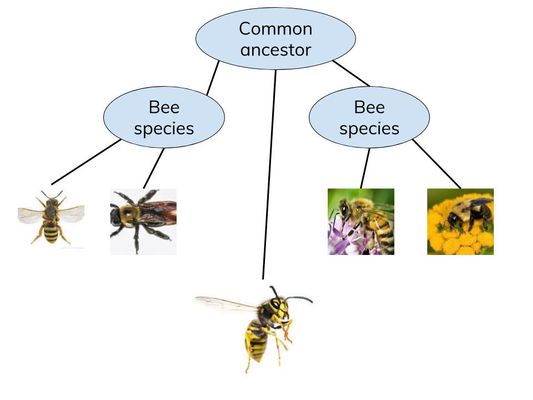

Evolution
Evolution
- The process of natural selection gives rise to evolution.
- Evolution is defined as a change in allele frequencies over time.
- E.g. The evolution of humans is the change in allele frequencies that has taken place over millions of years. This change has been driven by natural selection.
1Cell Structure
1.1Cell Structure
1.1.1Studying Cells - Microscopes
1.1.2Introduction to Eukaryotic & Prokaryotic Cells
1.1.3Ultrastructure of Eukaryotic Cells
1.1.4Ultrastructure of Eukaryotic Cells 2
1.1.5Ultrastructure of Eukaryotic Cells 3
1.1.6Prokaryotic Cells
1.1.7Viruses
1.1.8End of Topic Test - Cell Structure
1.1.9Exam-Style Question - Microscopes
1.1.10A-A* (AO2/3) - Cell Structure
2Biological Molecules
2.1Testing for Biological Modules
2.2Carbohydrates & Lipids
2.3Proteins
3Enzymes
4Cell Membranes & Transport
4.1Biological Membranes
5The Mitotic Cell Cycle
6Nucleic Acids & Protein Synthesis
6.1Nucleic Acids
7Transport in Plants
8Transport in Mammals
8.1Circulatory System
8.2Transport of Oxygen & Carbon Dioxide
9Gas Exchange
9.1Gas Exchange System
10Infectious Diseases
10.1Infectious Diseases
10.2Antibiotics
11Immunity
12Energy & Respiration (A2 Only)
13Photosynthesis (A2 Only)
14Homeostasis (A2 Only)
14.1Homeostasis
14.2The Kidney
14.3Cell Signalling
14.4Blood Glucose Concentration
14.5Homeostasis in Plants
15Control & Coordination (A2 Only)
15.1Control & Coordination in Mammals
15.1.1Neurones
15.1.2Receptors
15.1.3Taste
15.1.4Reflexes
15.1.5Action Potentials
15.1.6Saltatory Conduction
15.1.7Synapses
15.1.8Cholinergic Synnapses
15.1.9Neuromuscular Junction
15.1.10Skeletal Muscle
15.1.11Sliding Filament Theory Contraction
15.1.12Sliding Filament Theory Contraction 2
15.1.13Menstruation
15.1.14Contraceptive Pill
15.2Control & Co-Ordination in Plants
16Inherited Change (A2 Only)
16.1Passage of Information to Offspring
16.2Genes & Phenotype
17Selection & Evolution (A2 Only)
17.2Natural & Artificial Selection
18Classification & Conservation (A2 Only)
18.1Biodiversity
18.2Classification
19Genetic Technology (A2 Only)
19.1Manipulating Genomes
19.2Genetic Technology Applied to Medicine
19.3Genetically Modified Organisms in Agriculture
Jump to other topics
1Cell Structure
1.1Cell Structure
1.1.1Studying Cells - Microscopes
1.1.2Introduction to Eukaryotic & Prokaryotic Cells
1.1.3Ultrastructure of Eukaryotic Cells
1.1.4Ultrastructure of Eukaryotic Cells 2
1.1.5Ultrastructure of Eukaryotic Cells 3
1.1.6Prokaryotic Cells
1.1.7Viruses
1.1.8End of Topic Test - Cell Structure
1.1.9Exam-Style Question - Microscopes
1.1.10A-A* (AO2/3) - Cell Structure
2Biological Molecules
2.1Testing for Biological Modules
2.2Carbohydrates & Lipids
2.3Proteins
3Enzymes
4Cell Membranes & Transport
4.1Biological Membranes
5The Mitotic Cell Cycle
6Nucleic Acids & Protein Synthesis
6.1Nucleic Acids
7Transport in Plants
8Transport in Mammals
8.1Circulatory System
8.2Transport of Oxygen & Carbon Dioxide
9Gas Exchange
9.1Gas Exchange System
10Infectious Diseases
10.1Infectious Diseases
10.2Antibiotics
11Immunity
12Energy & Respiration (A2 Only)
13Photosynthesis (A2 Only)
14Homeostasis (A2 Only)
14.1Homeostasis
14.2The Kidney
14.3Cell Signalling
14.4Blood Glucose Concentration
14.5Homeostasis in Plants
15Control & Coordination (A2 Only)
15.1Control & Coordination in Mammals
15.1.1Neurones
15.1.2Receptors
15.1.3Taste
15.1.4Reflexes
15.1.5Action Potentials
15.1.6Saltatory Conduction
15.1.7Synapses
15.1.8Cholinergic Synnapses
15.1.9Neuromuscular Junction
15.1.10Skeletal Muscle
15.1.11Sliding Filament Theory Contraction
15.1.12Sliding Filament Theory Contraction 2
15.1.13Menstruation
15.1.14Contraceptive Pill
15.2Control & Co-Ordination in Plants
16Inherited Change (A2 Only)
16.1Passage of Information to Offspring
16.2Genes & Phenotype
17Selection & Evolution (A2 Only)
17.2Natural & Artificial Selection
18Classification & Conservation (A2 Only)
18.1Biodiversity
18.2Classification
19Genetic Technology (A2 Only)
19.1Manipulating Genomes
19.2Genetic Technology Applied to Medicine
19.3Genetically Modified Organisms in Agriculture
Unlock your full potential with Seneca Premium
Unlimited access to 10,000+ open-ended exam questions
Mini-mock exams based on your study history
Unlock 800+ premium courses & e-books